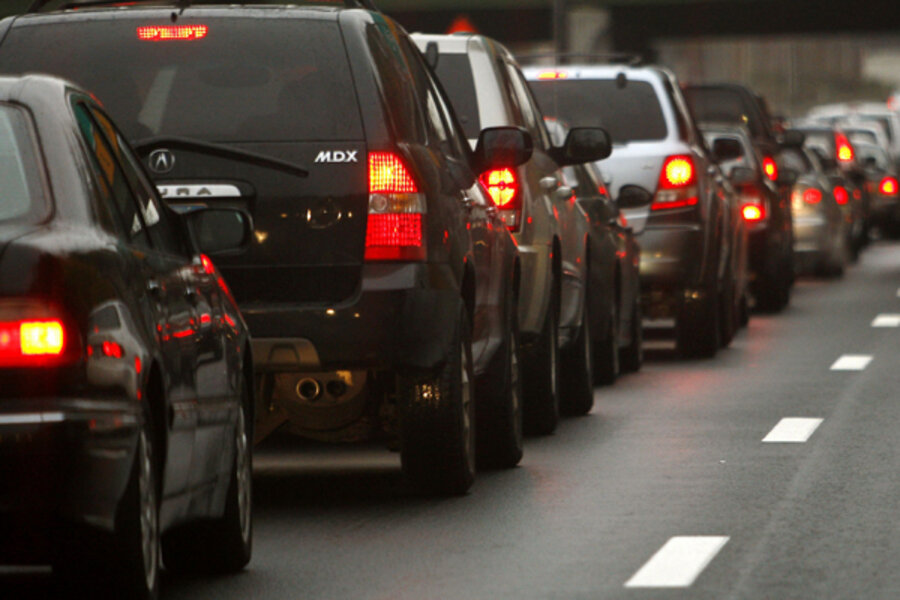Why teen drinking and driving has been cut in half in past 20 years
Loading...
The number of high school students who drink and drive has decreased by half in the past 20 years, with graduated driver-licensing systems, zero-tolerance laws, and parental involvement proving to be effective deterrents.
Nine out of 10 high-schoolers chose not to drink and drive in 2011 – a 54 percent decrease since 1991 – according to an October Vital Signs report by the Centers for Disease Control and Prevention (CDC). The analysis is based on the CDC’s Youth Risk Behavior Surveys from 1991 to 2011, which asked high school students 16 and older if they had driven a vehicle at least once during the past 30 days after drinking alcohol.
Safety advocacy groups and government agencies have been working for years with youths and parents to raise awareness about the dangers of underage drinking and reckless driving.
“The study is encouraging,” says Jan Withers, national president of Mothers Against Drunk Driving (MADD). “It’s evidence that the work we’ve been doing in America to bring the teen drinking-and-driving rate down is working.”
Ms. Withers’s passion for this issue comes from personal experience. Twenty years ago, her 15-year-old daughter Alisa was hanging out with a good friend and some older boys who were drinking. Her daughter didn’t drink, but she got into a car with a driver who had been drinking. Trying to impress his friends, the 17-year-old driver sped the car up to 120 miles per hour and lost control of the vehicle. The other teens survived, but her daughter did not.
Her daughter is always with her, Withers says, especially as she talks with youths, parents, and legislatures about underage drinking.
Parental involvement – particularly when it is ongoing, positive conversations with teens about drinking – will reduce both the volume and frequency of underage drinking by as much as 30 percent, shows research by Robert Turrisi, professor of biobehavioral health at Pennsylvania State University in University Park.
In addition to parental involvement, state regulations have contributed to the decreasing number of teens drinking and driving.
“Graduated driver licensing (GDL) systems help new drivers get more experience under less risky conditions,” the report says.
States began enacting GDL in the 1990s, and all states now have beginner, intermediate, and full-privilege stages, although restrictions vary among states. The greatest variation occurs in the intermediate stage, when young drivers can drive on their own but are restricted by how late they can drive and how many teen passengers are allowed in the vehicle, according to the Governors Highway Safety Association.
Every state also has zero-tolerance laws, making it illegal for anyone under 21 to drive after drinking any alcohol, which have reduced drunken-driving accidents involving teens, the CDC report says. Also, enforcement of minimum drinking-age laws, which make it illegal to sell alcohol to anyone under 21 years old, has reduced sales of alcohol to underage drinkers.
However, there is more to do for the trend to continue. Collectively, teenagers drive after drinking about 2.4 million times a month, and 85 percent of high-schoolers who say they drink and drive also report binge drinking (having five or more drinks within a couple of hours), the CDC report found.
The CDC recommends that parents set “rules of the road” for their teens, emphasizing safe driving habits. Beyond the obvious “don’t drink and drive,” teens should obey speed limits, wear a seat belt, restrict nighttime driving, limit teen passengers, and not text-message while driving.
Dr. Turrisi and MADD have also created an evidence-based handbook with advice for parents about having constructive conversations with their teenagers.
“Seventy-four percent of teenagers say that their parents are the biggest influence in their decision about using alcohol,” says Withers. “We have this idea that peer pressure is so strong, that teens aren’t as influenced by us.... In fact, we have a tremendous amount of influence over our kids.”
It’s important, Withers says, for parents to show their children respect, create clear expectations and consequences, and, most important, explain that they are doing this because they care.








